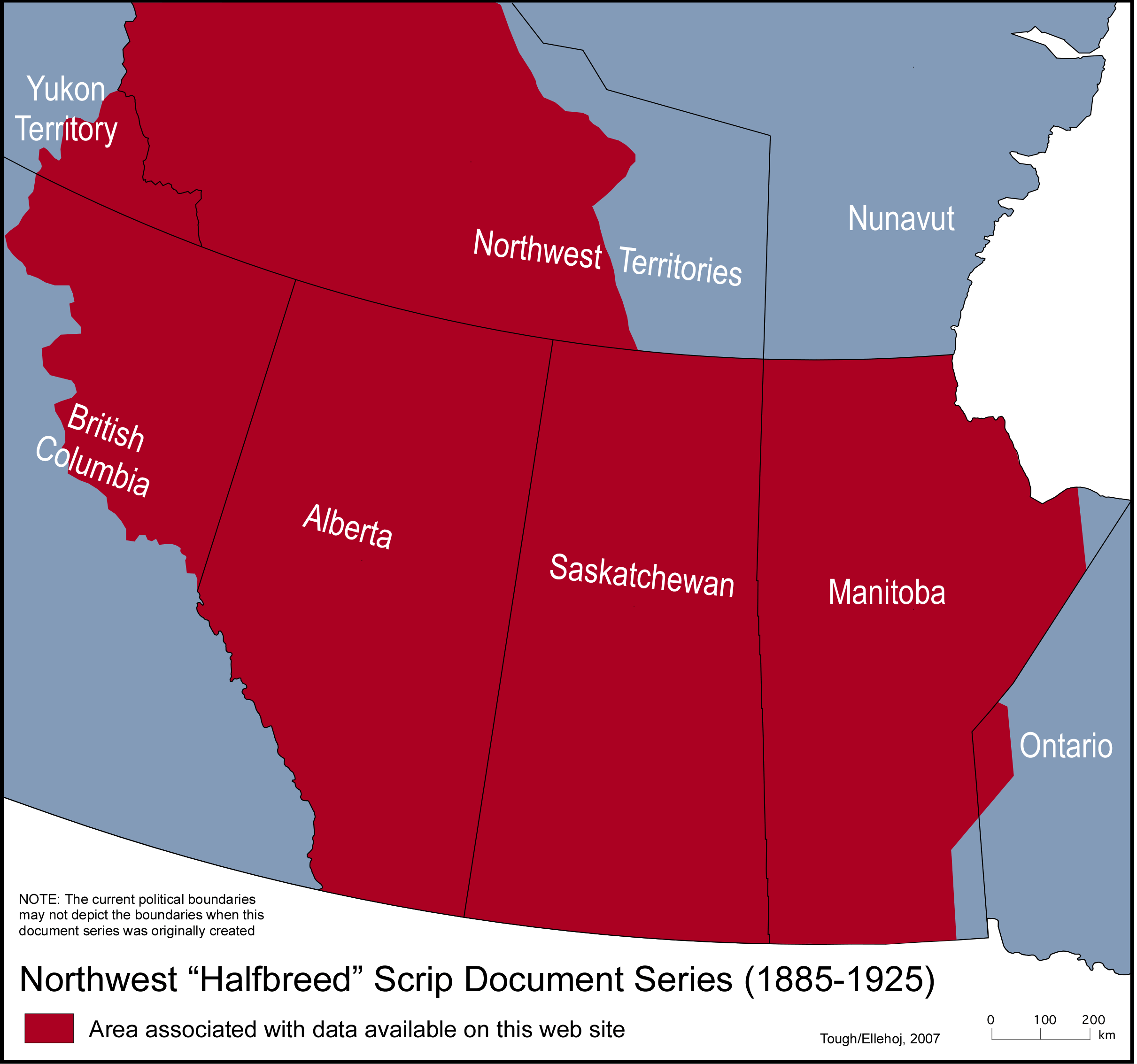Northwest Scrip Application
Overview
In 1879, the Dominion Lands Act was amended to allow the Canadian government to deal with Métis claims stemming from the “extinguishment of Indian title” in the Northwest Territories,[1] outside of the boundaries of the Province of Manitoba.
During the Northwest Rebellion of 1885, the government began issuing “Half-breed Scrip” to Métis people in the Northwest Territories. “Halfbreed” scrip entitlements were issued in amounts of either 160/240 acres or $160.00/$240.00 between the years of 1885 and 1925. In 1929, the Department of the Interior reported that a total of 14,113 “half-breed” claims had been dealt with in the Northwest, amounting to the distribution of 1,161,612 acres and $2,137,097.00 in scrip.[2] The Northwest scrip system was influenced by the procedures used in the distribution of the Manitoba Act grants. However, Northwest Scrip was not identical, either in process or distribution, to the scrip and land grants issued in the “postage stamp” Province of Manitoba.

Scrip Applications were the first step in a Métis person’s claim to scrip. Similar to Manitoba Affidavits, these documents asked questions about the Métis claimant’s family, occupation, and residence. Today, these documents are valuable tools for research, providing genealogical, geographical, and occupational/economic information on the historical Métis population.
[1] At the time, the “Northwest Territories” consisted of what is now Saskatchewan, Alberta, the Yukon Territory, the Northwest Territories, Nunavut, and the Keewatin portion of Manitoba that was not included within the original 1870 provincial boundaries.
[2] LAC, RG 15, vol. 38, file 2, N.O. Cote, “Administration and Sale of Dominion Lands, Claims Under the Manitoba Act, Half-Breed Claims, and Letters Patent for Dominion Lands,” (Ottawa: Department of the Interior, 1931) p. 19.